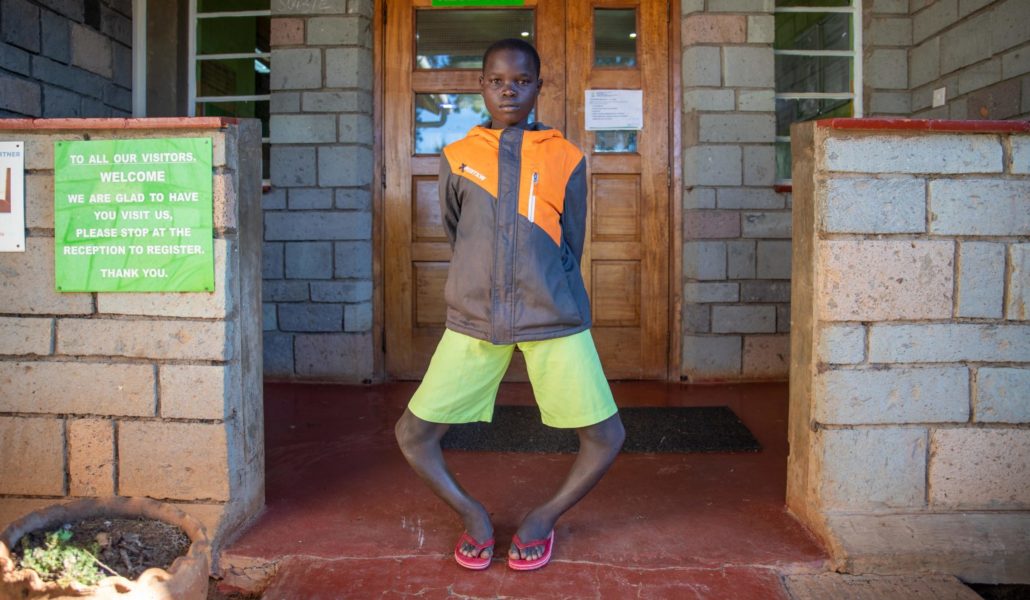Conditions we treat: Bowed legs
This blog is part of an ongoing series looking to explain the common conditions CURE treats in ways that all of us non-medical folk can understand.
Bowed legs are a condition where the legs appear to bend outwardly around or below the knees, even if the ankles are together. A child can be born with bowed legs or can develop the condition over time.
Bowed legs are commonly seen in infants because of their position in the womb during pregnancy. This does not usually require any treatment because the child’s legs will begin to straighten when they start to walk. Typically, a child will start walking between 12 and 18 months old. When a child is two years old or older and still has bowed legs, the child should be seen by a doctor to determine if there are any underlying conditions causing the condition.
Sometimes, we see patients with bowed legs caused by Blount’s disease. This is when the bone between the knee and ankle develops abnormally, and when the child starts walking, the bowing of the legs becomes worse. Blount’s disease can be detected early on, but in some cases, it may not be noticeable until the child reaches adolescence.
We also see patients with bowed legs caused by rickets. Rickets is when the bones are weakened, usually due to a severe lack of vitamin D. Other causes of bowed legs include bone fractures that were treated but didn’t heal properly and abnormally developed bones.

Condoleeza is a 13-year-old girl from Kenya that suffered from severely bowed legs. We met her during a mobile clinic near her home. When she was little, her dad thought that she was born with rickets and that she would be healed as she grew older. But, she didn’t get better. Thankfully, Condeleeza (Condi) received surgery at CURE Kenya to straighten her legs. When Condi returned home, word spread of her transformation, which led two other children with treatable disabilities to CURE Kenya for treatment!

Children that grow up with bowed legs can have a hard time in school. They are often stared at and bullied by their peers. In fact, if they have to walk a long distance to get to school, the child may stop attending. This happened to Condoleeza, and she struggled in school. She started school late because of the distance and had a hard time focusing on her studies due to the distraction of her condition. Since her surgery, things have changed! She is encouraged and does not want to miss school!
We can help children with bowed legs change their lives, and you can be part of their transformation! To learn more about how you can give to support children with bowed legs and other treatable disabilities, click here.
One of the beautiful things about CURE is that it allows everyone to participate in the life-transforming surgeries that are provided daily at the CURE hospitals all around the world. You don’t need to be able to understand words like bilateral, ventricle, genu valgum, congenital, or cerebral-spinal fluid to take part in the life-changing and life-saving work that is done. But with this said, having an understanding of the conditions CURE treats does allow a deeper appreciation of just how important the work your donation is enabling the CURE staff to do!
Footnote: Article written by Elvis Lemaiyan, CURE Kenya Storyteller on Wednesday 17th February 2021
